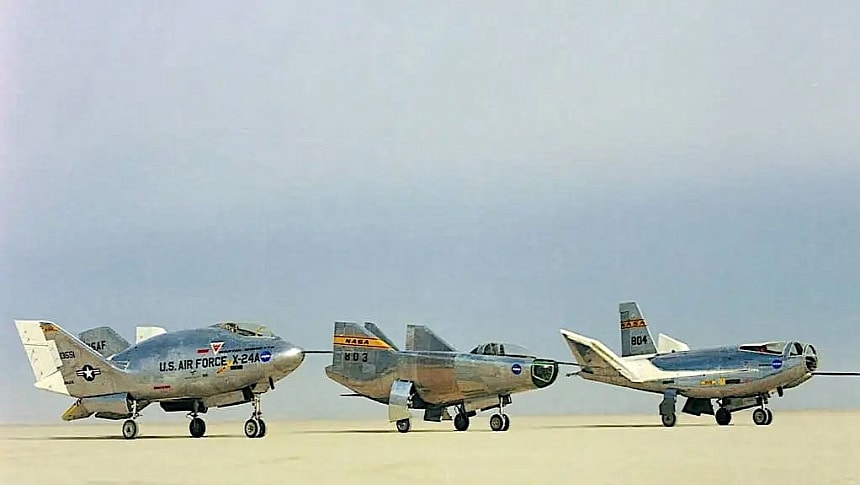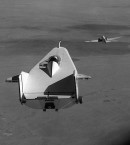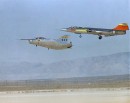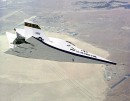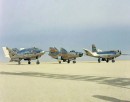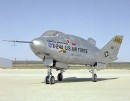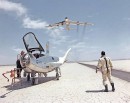Ever since the dawn of aviation many years ago aircraft have established themselves as fixed-wing machines capable of taking to the sky. Why winged? Well, for the simple reason that such a design is the most effective that we know of that can generate lift. Or is it?
Back in 1917, at a time when aviation was still young, an American tailor named Roy Scroggs imagined a new kind of aircraft that had no wings. Called The Last Laugh it was more or less shaped like a dart, and used the shape of its own body to generate lift instead of conventional wings.
Nothing came of The Last Laugh, as nothing really came of a lifting-body aircraft either. The reasons for that are lost to history, and they may no longer matter as there are several aviation startups working on making such a design a reality.
Even if for aviation lifting bodies didn't mean much until now, they were and still are considered as a potential way of designing hardware for space exploration.
Back in the early 1960s American space agency NASA kicked off at the location now known as the Armstrong Flight Research Center in Edwards, California, a test program for a series of such aircraft.
A total of six such designs (they were called M2-F1, M2-F2, M2-F3, HL-10, X-24A, and X-24B) were put through their paces, including during test flights that demonstrated the pilots' ability to fly and land them.
The wingless machines relied on the shape of their bodies for lift, and on fins and control surfaces installed here and there. Power for all but one of them (the M2-F1 had no engine) came from an XLR-11 rocket engine, the same kind that was earlier deployed on the first aircraft to break the sound barrier, the Bell X-1.
NASA performed tests with these machines from 1963 to 1975, and proudly says the work conducted with them eventually led to the development of the Space Shuttle. And, even if that work has long concluded, it could now lead to the development of aircraft meant to study other planets.
The six prototypes the agency flew decades ago are the center of a new project being run at Armstrong. Led by an investigator there named John Bodylski, the project aims to develop lifting-body aircraft with no engines that could be used to gather atmospheric data on alien worlds, especially the giant ones in our solar system.
Now that the Ingenuity helicopter proved that powered flight is possible in the atmosphere of other planets, NASA is looking at wingless machines that could take on the role of satellites but with better capabilities and lower cost.
The idea seems to have enough merit for NASA to task Bodylski through its Center Innovation Fund to write a paper on his idea, but also build models to help advance work on an actual prototype.
And that's exactly what Bodylski did, with help from people from the Armstrong Dale Reed Subscale Flight Research Laboratory – not one, but two lifting body aircraft models have been created, tiny in size (they are just a little over 27 inches/69 cm long and 24 inches/61 cm wide), but effective in giving us a glimpse as to what to expect (check the attached gallery for that).
The first model is made of carbon fiber and foam but still lacks a lot of components. The second one, however, is already equipped with hinged flight control surfaces, and is currently awaiting that to be tied to the structure.
If the models come out right, they could inform the creation of computer models, and from there it's only a step to an actual atmospheric probe of this kind.
Building an actual spacecraft using this design is still a long time away, but NASA already has an idea of how they could operate.
The lifting body aircraft would be sent to an alien world attached to satellites. Once in orbit, they would detach after firing pyrotechnic bolts and descend into the atmosphere to collect data from altitudes that are not easy to reach by satellites.
The actual probes would be about the same size as the models currently being built. They would drop faster and at a steeper angle than what existing CubeSats are capable of. In doing so they would be able to gather ten data points four times faster than existing technologies (in just ten minutes instead of 40). More importantly, in thicker atmospheres, lifting body probes would be able to operate for as much as 30 minutes.
The downside is that these things are unpowered, and they will eventually be destroyed as they have no way of coming back up.
NASA plans to test the models currently being built by the end of March. A rotorcraft will take the lifting body up and air launch it as a glider. After the first mission is over, further tests are expected in the coming months.
The goals of these procedures are to see if the design can fly, but also to determine if it is stable and what components can be integrated.
NASA doesn't say anything about a potential real-life use of the design anytime soon.
Nothing came of The Last Laugh, as nothing really came of a lifting-body aircraft either. The reasons for that are lost to history, and they may no longer matter as there are several aviation startups working on making such a design a reality.
Even if for aviation lifting bodies didn't mean much until now, they were and still are considered as a potential way of designing hardware for space exploration.
Back in the early 1960s American space agency NASA kicked off at the location now known as the Armstrong Flight Research Center in Edwards, California, a test program for a series of such aircraft.
A total of six such designs (they were called M2-F1, M2-F2, M2-F3, HL-10, X-24A, and X-24B) were put through their paces, including during test flights that demonstrated the pilots' ability to fly and land them.
The wingless machines relied on the shape of their bodies for lift, and on fins and control surfaces installed here and there. Power for all but one of them (the M2-F1 had no engine) came from an XLR-11 rocket engine, the same kind that was earlier deployed on the first aircraft to break the sound barrier, the Bell X-1.
NASA performed tests with these machines from 1963 to 1975, and proudly says the work conducted with them eventually led to the development of the Space Shuttle. And, even if that work has long concluded, it could now lead to the development of aircraft meant to study other planets.
Now that the Ingenuity helicopter proved that powered flight is possible in the atmosphere of other planets, NASA is looking at wingless machines that could take on the role of satellites but with better capabilities and lower cost.
The idea seems to have enough merit for NASA to task Bodylski through its Center Innovation Fund to write a paper on his idea, but also build models to help advance work on an actual prototype.
And that's exactly what Bodylski did, with help from people from the Armstrong Dale Reed Subscale Flight Research Laboratory – not one, but two lifting body aircraft models have been created, tiny in size (they are just a little over 27 inches/69 cm long and 24 inches/61 cm wide), but effective in giving us a glimpse as to what to expect (check the attached gallery for that).
The first model is made of carbon fiber and foam but still lacks a lot of components. The second one, however, is already equipped with hinged flight control surfaces, and is currently awaiting that to be tied to the structure.
If the models come out right, they could inform the creation of computer models, and from there it's only a step to an actual atmospheric probe of this kind.
Building an actual spacecraft using this design is still a long time away, but NASA already has an idea of how they could operate.
The actual probes would be about the same size as the models currently being built. They would drop faster and at a steeper angle than what existing CubeSats are capable of. In doing so they would be able to gather ten data points four times faster than existing technologies (in just ten minutes instead of 40). More importantly, in thicker atmospheres, lifting body probes would be able to operate for as much as 30 minutes.
The downside is that these things are unpowered, and they will eventually be destroyed as they have no way of coming back up.
NASA plans to test the models currently being built by the end of March. A rotorcraft will take the lifting body up and air launch it as a glider. After the first mission is over, further tests are expected in the coming months.
The goals of these procedures are to see if the design can fly, but also to determine if it is stable and what components can be integrated.
NASA doesn't say anything about a potential real-life use of the design anytime soon.
